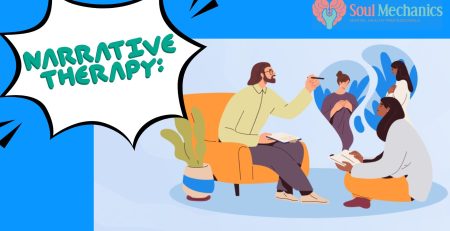We often have a natural tendency to walk away or avoid situations and things that we’re afraid of. This avoidance can provide temporary relief, but, it doesn’t help us overcome our fears and may even make them worse. That’s where exposure therapy comes in. It’s an evidence-based therapy aimed at treating anxiety-related mental health issues. With exposure therapy, we can break the cycle of avoidance and fear. During exposure therapy, therapists create a safe environment for us to confront the sources of our fear. This exposure takes place in a controlled and supportive setting, which helps gradually reduce avoidance behaviours and decrease our fear. The therapy focuses on systematically confronting both external sources of fear and internal sources as well.
Paces of Exposure Therapy
Exposure therapy can progress at different paces and techniques. The therapist will tailor the treatment plan according to our needs. The pace of exposure therapy can be done in different ways such as:
- Graded exposure: We work together with our therapist to create a fear hierarchy. This involves ranking the stimuli according to our personal fear levels. We then gradually expose ourselves to these fears, step by step, similar to climbing a ladder. We start with the easier, less challenging fears and gradually progress towards more difficult ones, allowing us to face and overcome our fears in a manageable way.
- Systematic Desensitization: A technique that helps us feel more comfortable and relaxed as we gradually increase the difficulty of our exposure. During this process, we engage in various relaxation exercises such as deep breathing, meditation, guided imagery, and progressive muscle relaxation. These techniques help us develop a sense of control and enable us to associate relaxation with the feared stimuli, making the experience more manageable.
- Flooding. Flooding also involves working with the therapist to create a fear hierarchy. However, unlike graded exposure, flooding involves starting with the highest level of fear first to help us overcome our fear faster. This method is typically utilized when our fear significantly impacts our daily life and functioning.

Techniques of Exposure Therapy
There are different variety of techniques to be used in exposure therapy such as:
- In Vivo, Exposure: In vivo exposure involves directly facing the feared stimulus or situation in real life. We need to practice approaching our fear stimulus directly in real life to reduce the feelings of fear.
- Imaginal Exposure: Imaginal exposure involves vividly imagining the feared stimulus coming true in detail. We will need to imagine and describe the situation in a written narrative. Then we will need to listen or reread our imagined script repeatedly to prepare ourselves for similar situations.
- Virtual Reality Exposure: Virtual reality exposure is commonly used when vivo exposure is not practical. This approach allows us to confront our fear in virtual reality. We will be practising confronting our fear by watching a virtual video or having a virtual situation in the therapy room.
- Interoceptive Exposure: Interoceptive exposure involves tackling a feared physical sensation to help us understand that these physical sensations are harmless. We might request to run or jump to increase our heart rate and eventually realize that an increase of heart rate is not dangerous.
Courtney Deangelis, PsyD assistant professor of Medical Psychology at Columbia Psychology said that Exposure therapy can significantly reduce an individual’s anxiety symptoms, increase a person’s ability or willingness to approach uncomfortable situations, and strengthen learning that individuals can handle hard things. “Exposure therapy is an evidence-based treatment, which quite simply means that the research has shown us that it works,” says DeAngelis.
Researches on Exposure Therapy
There is extensive research that supports the effectiveness of exposure therapy for treating mental illnesses related to anxiety. A 2020 research review showed that in vivo exposure appears to be the most effective treatment for a wide variety of phobias. There is another 2020 research on the effectiveness of exposure therapy on anxiety disorder among children. The result showed a high percentage of success rate in treating children with anxiety disorder. Besides, a study in 2017 found a reduction in anxiety in older adults with exposure therapy as their treatment plan. A 2019 review of the study supported the use of exposure therapy for treating Obsessive Compulsive Disorder (OCD). A small study in 2018 also proved the effectiveness of exposure therapy in treating panic attacks in a group of eight people. Another 2019 research found significant reductions in social anxiety in a group of six participants who stutter.
Habituation in Exposure Therapy
Habituation occurs when we gradually expose ourselves repeatedly to the sources of our fear, leading to decreased reactions over time. The initial strong reaction of fear lessens as we become more familiar with these sources of fear through repetition. Next, extinction is another important aspect of our journey. It involves weakening the learned associations between the source of our fear and the negative outcomes we expect. In a safe environment, we begin to understand that the sources of our fear do not pose an actual threat or danger. Emotional processing helps in the exploration and understanding of the sources of the fear. Eventually, we will be able to become more comfortable with the experience of fear. Lastly, self-efficacy is being capable of confronting fears and managing the anxiety brought by the fear.
Conclusion
Although exposure therapy is a scientifically proven therapy that helps to overcome fear and manage anxiety, it is highly recommended to undergo this therapy under the supervision of a trained professional. Improper performance of exposure therapy without the supervision of a trained professional can lead to further anxiety and trauma. There is a small study in 2018 stated that the effectiveness of therapist-directed exposure therapy is higher than self-directed treatment in treating OCD patients.
Another interesting approach in therapy will be Acceptance and Commitment Therapy (ACT), you can read more about it here.
For more content related to mental health do follow us on our official Instagram.





Leave a Reply